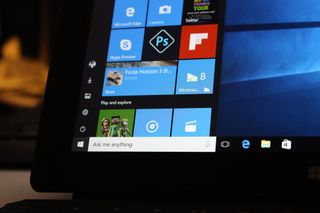Will you be able to get the Windows 10 Creators Update on April 11?
The Windows 10 Creators Update is expected to be available on April 11, but that doesn't necessarily mean you'll get it on day one. Here's how Microsoft's rollout will work.

Starting April 11, 2017, Microsoft begins the official rollout of the Creators Update for Windows 10. The new version of the OS is available for desktop PCs, laptops and tablets. Windows phones are expected to get the update on April 25, and if you own an Xbox One, you can get the Creators Update immediately.
The Creators Update is the third Windows 10 refresh, and it's a big update. Although you probably won't see drastic visual changes because most of the improvements are happening under-the-hood, the new version delivers a handful of features and enhancements. Some of these new changes include new support for 3D and mixed reality, improvements on the Start menu and Cortana, and a vastly improved Settings app. Microsoft Edge gets an e-book reader and new tools to manage tabs, and the Creators Update also adds security improvements, including a new Windows Defender Security Center dashboard.
What devices will get the Creators Update on April 11?
While the new version will be available for millions of devices around the world, there's still one big question to be answered: Will you get the Windows 10 Creators Update on April 11?
The short answer is maybe because there are a lot of factors that have to be considered. The new version of Windows 10 will be available starting April 11, but that doesn't mean everyone will get it the same day.
It's a gradual release and select devices will get it first
Microsoft will roll out Windows 10 version 1703 in phases. This time around, to offer the best update experience possible, the company will be updating newer desktop PCs, laptops, and tablets that have been tested to work with the Creators Update first. Some of these devices may include Surface PCs and devices that originally came with Windows 10. Then, based on feedback from telemetry during the initial release phase, Microsoft will continue rolling out the update to other devices.
Other factors that can delay your device from getting the update include feedback from customers, certain installed software, hardware compatibility, device make and model, geographical location, and the way you obtained the OS.
In addition, you need to consider that a lot of devices will try to download the update on day one. While Microsoft will be provisioning enough servers and bandwidth, contacting the update servers during the first few days may be a challenge.
Get the Windows Central Newsletter
All the latest news, reviews, and guides for Windows and Xbox diehards.
Unlike the Anniversary Update, the rollout of the Creators Update will be much slower, and it'll take months until every compatible device is upgraded. Possible issues during the early days could cause significant delays. Although the Creators Update aims to make Windows 10 the best version ever, sometimes big changes can break other features, and unknown bugs may appear and negatively affect your experience.
Delivering a new version slowly helps Microsoft to minimize the number of affected devices, and halt the rollout if necessary.
Other ways to get the Creators Update on April 11
If your computer isn't getting the update on day one, and you can't wait until it arrives automatically, there are a number of ways to install the Creators Update immediately.
Whether you're running Windows 10 Pro or Windows 10 Home, you can use the Update Assistant to skip the queue and jump to the new version right away. The assistant is a small tool that's designed to force a feature update if Windows Update isn't working, but anyone can use it.

Additionally, Microsoft makes available the Media Creation Tool, which is another easy-to-use utility that allows you to perform a forced upgrade. This process is identical to the Windows Update process, and it'll keep your personal files, settings, and apps intact. You can even use the tool to do a clean install of Windows 10. However, you'll need to restore your personal files from backup, reconfigure your settings, and reinstall all your apps.

Wrapping things up
The Creators Update is now finalized, and even after many months of development, Microsoft still has to face its biggest challenge when the update heads out to millions of devices around the world.
On April 11, many users will try to download and install the update. If you're planning to rush the update, be patient, and remember that if your device isn't getting it, that's normal in a slow rollout. You will eventually get it.
If you're having issues during or after the installation of the Creators Update, we have you covered. Check out our guide to help you troubleshoot and fix common problems with the new update.
More Windows 10 resources
For more help articles, coverage, and answers to common questions about Windows 10, visit the following resources:
- Windows 10 on Windows Central – All you need to know
- Windows 10 help, tips, and tricks
- Windows 10 forums on Windows Central
Mauro Huculak is technical writer for WindowsCentral.com. His primary focus is to write comprehensive how-tos to help users get the most out of Windows 10 and its many related technologies. He has an IT background with professional certifications from Microsoft, Cisco, and CompTIA, and he's a recognized member of the Microsoft MVP community.

